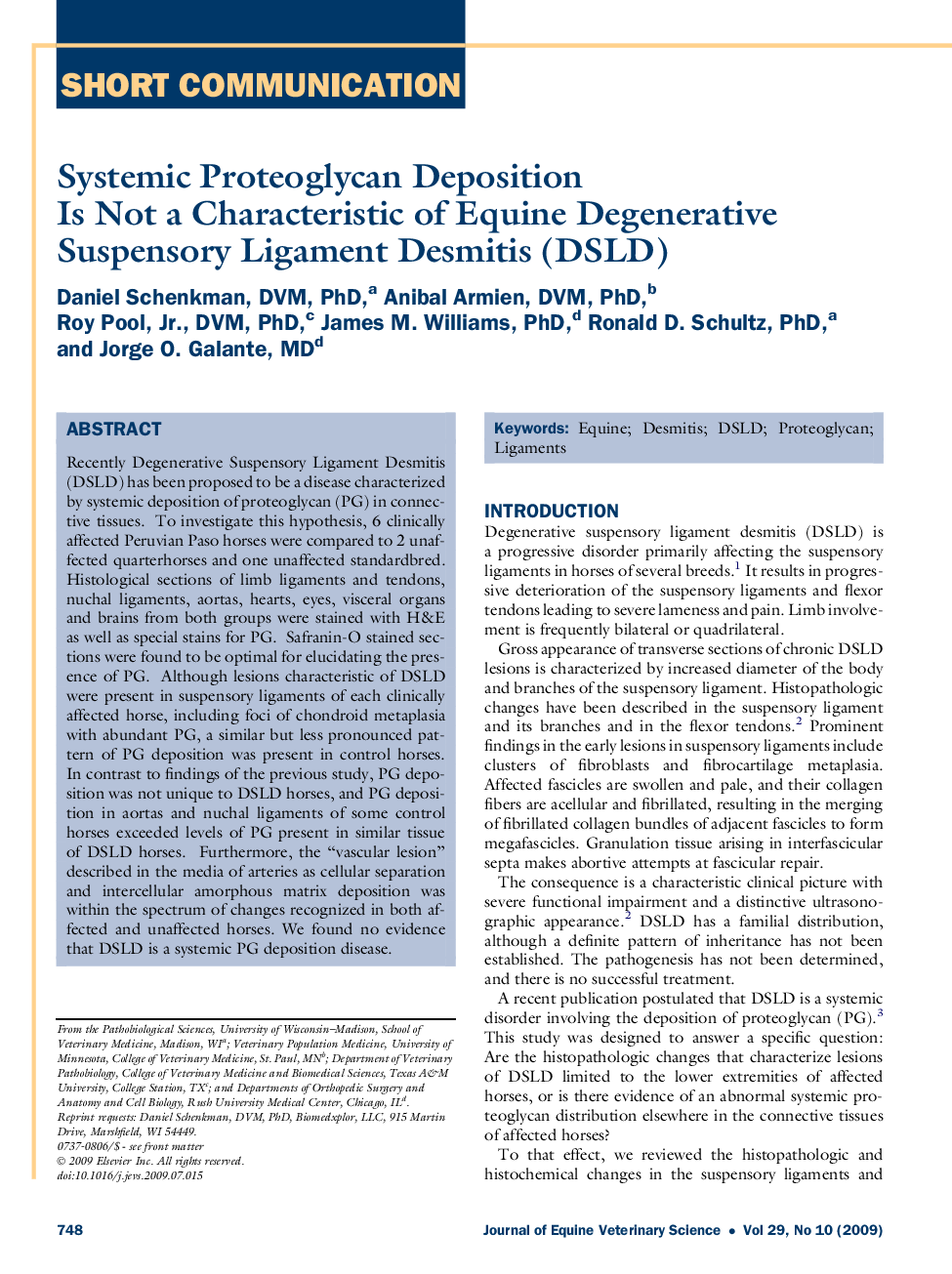| Article ID | Journal | Published Year | Pages | File Type |
|---|---|---|---|---|
| 2396278 | Journal of Equine Veterinary Science | 2009 | 5 Pages |
Recently Degenerative Suspensory Ligament Desmitis (DSLD) has been proposed to be a disease characterized by systemic deposition of proteoglycan (PG) in connective tissues. To investigate this hypothesis, 6 clinically affected Peruvian Paso horses were compared to 2 unaffected quarterhorses and one unaffected standardbred. Histological sections of limb ligaments and tendons, nuchal ligaments, aortas, hearts, eyes, visceral organs and brains from both groups were stained with H&E as well as special stains for PG. Safranin-O stained sections were found to be optimal for elucidating the presence of PG. Although lesions characteristic of DSLD were present in suspensory ligaments of each clinically affected horse, including foci of chondroid metaplasia with abundant PG, a similar but less pronounced pattern of PG deposition was present in control horses. In contrast to findings of the previous study, PG deposition was not unique to DSLD horses, and PG deposition in aortas and nuchal ligaments of some control horses exceeded levels of PG present in similar tissue of DSLD horses. Furthermore, the “vascular lesion” described in the media of arteries as cellular separation and intercellular amorphous matrix deposition was within the spectrum of changes recognized in both affected and unaffected horses. We found no evidence that DSLD is a systemic PG deposition disease.
